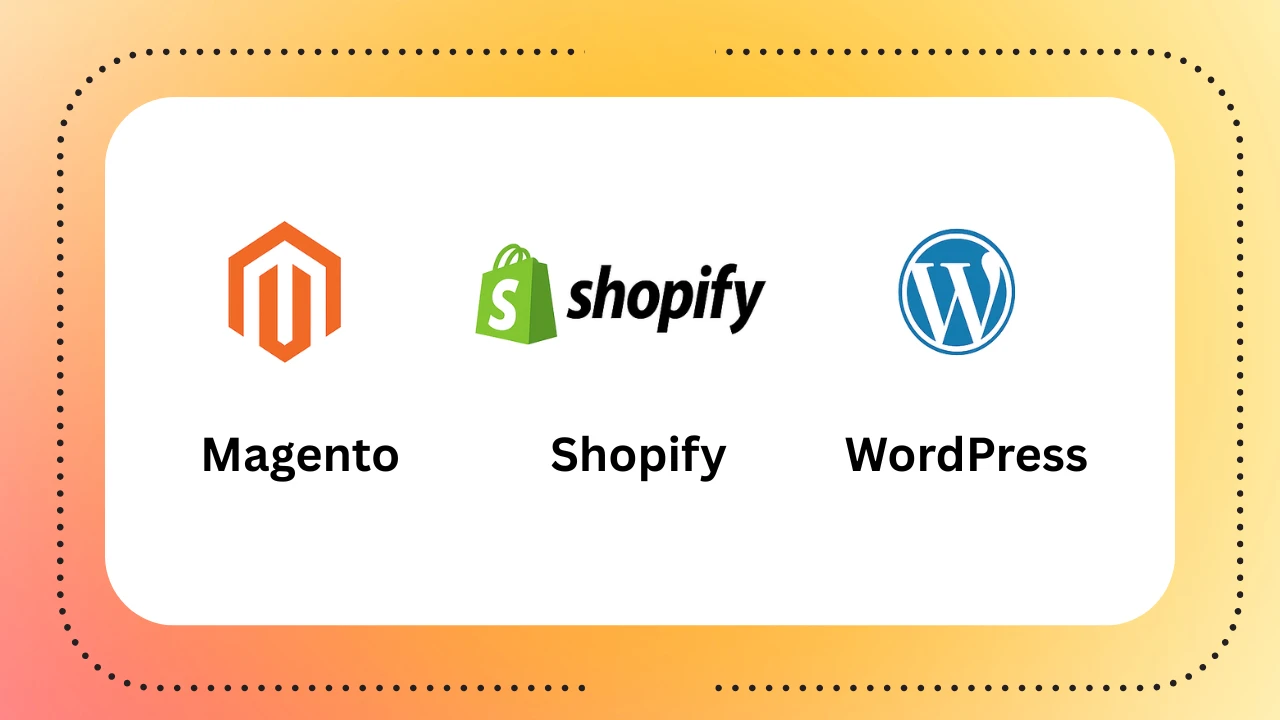You’re set with a product. You have a plan, but you need the correct digital shelf to sell it from.
With that said, selecting an e-commerce platform is not only about looking for features and ticking them off a list. It has to work for your business model, your team, and your growth aspirations.
In this article we will dissect the discourse around Shopify, Magento, and WooCommerce WordPress using the Problem-Agitate-Solution Approach.
Let’s get into it.
The Ride of E-Commerce Platform Paradox
The numbers are insane. India alone is projected to reach $350 billion in e-commerce sales by 2030 (InvestIndia). Indeed e-commerce is booming. But for businesses, be it startups, SMEs, or even enterprise players, the platform decision can create a bottleneck.
In this modern era, the common predicament for business owners or heads of marketing is deciding on:
- Which platform provides the maximum ROI?
- Am I going to require development assistance from the very start?
- Which platform is more scalable as I grow?
- Does it use SEO? Is it secure? Is it customizable?
- How user friendly is it really?
To further complicate matters, there is a whirlwind of marketing noise that surrounds each platform that claims to be the “best.” Headless commerce, CMS integration, open-source vs SaaS, and countless other jargons leave you sifting through meaningless terms.
However, if one explores the Shopify, Magento, and WordPress, the surface level differences in costs, long term scalability, performance and usability become glaringly stark.
Choosing Wrong = Time, Budget, and Customer Deletion
Discussing what happens when the wrong platform is selected is what we will go through next.
Budget burning without returns is your primary concern. For instance, if you launch on Magento assuming it’s the most powerful option, three months down the line, if you’re spending ₹50,000/month only on maintaining the store because your team lacks technical support, you’re losing out.
2. Your SEO Suffers This freely available online platform drew your attention because of its user-friendly interface. Little did you know that the Shopify blog, along with product content, is not indexing due to the website retaining faulty URL structures. While it seemed like a good idea at first, now you are loosing a significant amount of medical traffic which could have been benefitting you in the long run.
3. You’re Stuck with a Rigid Backend
At first sight, WooCommerce seems great. However, as the orders pour in, your site becomes increasingly sluggish. Other plugins begin to clash, things start breaking with every new update, and before you know it, you need a personal developer just to keep everything running smoothly.
Real life case: Pavers England India
In 2022 Pavers, the premium footwear brand, migrated from Magento 1 to Shopify Plus. What drove his decision? Magento updates were overly complicated, expensive, and required a developer’s constant attention. Take a look their numbers after the switch: site speed improved 32% and cart abandonment reduced 18% (source: Shopify’s case study).
Strategy By Platform
Let’s think step by step.
We will analyze and compare Shopify, Magento (Adobe Commerce), and WordPress (WooCommerce) based on the following criteria:
- User-Friendliness
- Development and Maintenance
- Search Engine Optimization (SEO) Capabilities
- Pricing Structure
- Customization and Features
- Security and Compliance
- Scalability
- Case Studies
At the end of this document, a comparison table can be found.
| Feature | Shopify | Magento | WordPress |
|---|---|---|---|
| Ease of Use | ✅ | ❌ | ✅ |
| Maintenance | ✅ | ❌ | ⚠️ |
| SEO | ⚠️ | ✅ | ✅ |
| Cost | ⚠️ | ❌ | ✅ |
| Customization | ⚠️ | ✅ | ✅ |
| Security | ✅ | ⚠️ | ⚠️ |
| Scalability | ✅ | ✅ | ⚠️ |
✅ = Strong
⚠️ = Moderate
❌ = Weak
The Glowbyte Verdict: What Should You Choose?
For the sake of clarity, here’s our take tailored towards different business needs:
- Startups/First-time sellers → Shopify
- Content rich brands or Information-first stores → WordPress + WooCommerce
- Custom B2B or Multi-brand enterprise setups → Invest in Magento
What We Do at Glowbyte
At Glowbyte, we do not recommend platforms based solely on features. We audit your current funnel, content strategy, ad spend, and available resources before matching your business model with the most suitable platform.
From initiating a Shopify store alongside its Google Shopping integration to reconstructing a Magento instance with GTM and CRM synchronization, we undertake initiatives that advance your revenue, not merely your technological frameworks.
Final Words
Choosing an e-commerce platform is a strategic decision and not just a technical one.
Avoid being overwhelmed with the features on offer. Consider your workforce, prospective growth, primary areas of concern in marketing, and budget. Begin with a modest approach and strive for intelligent scaling.
Looking to understand what suits your business best? Schedule a complimentary consultation session with us at Glowbyte. We provide guidance rooted in genuine experience rather than random opinions.






